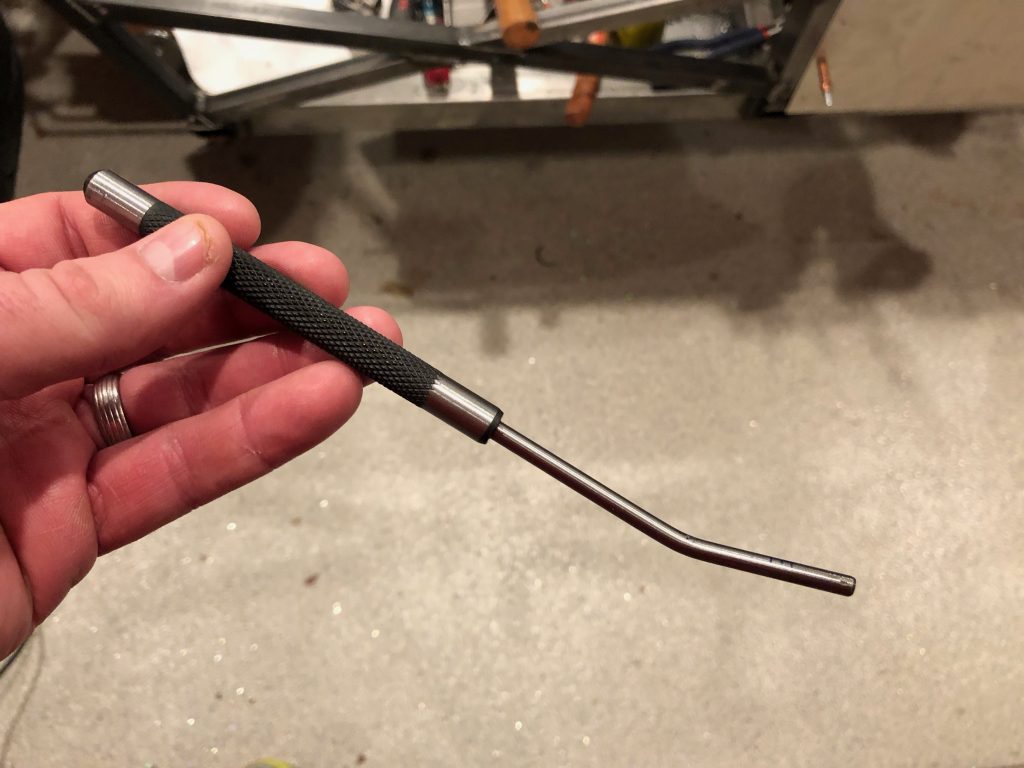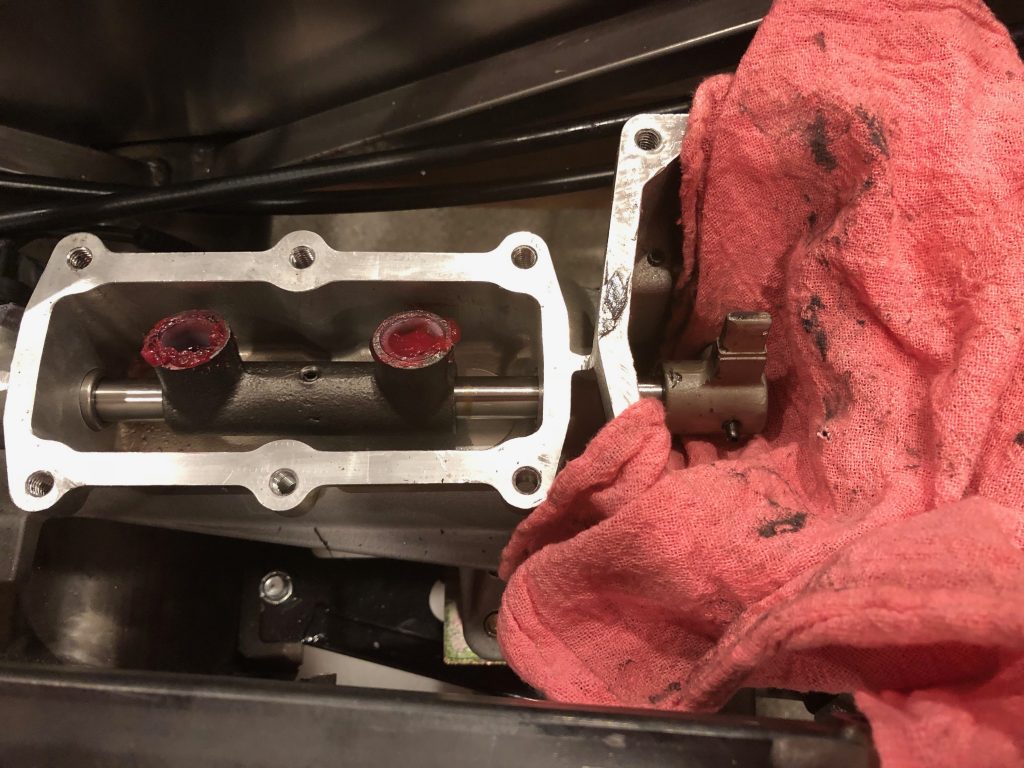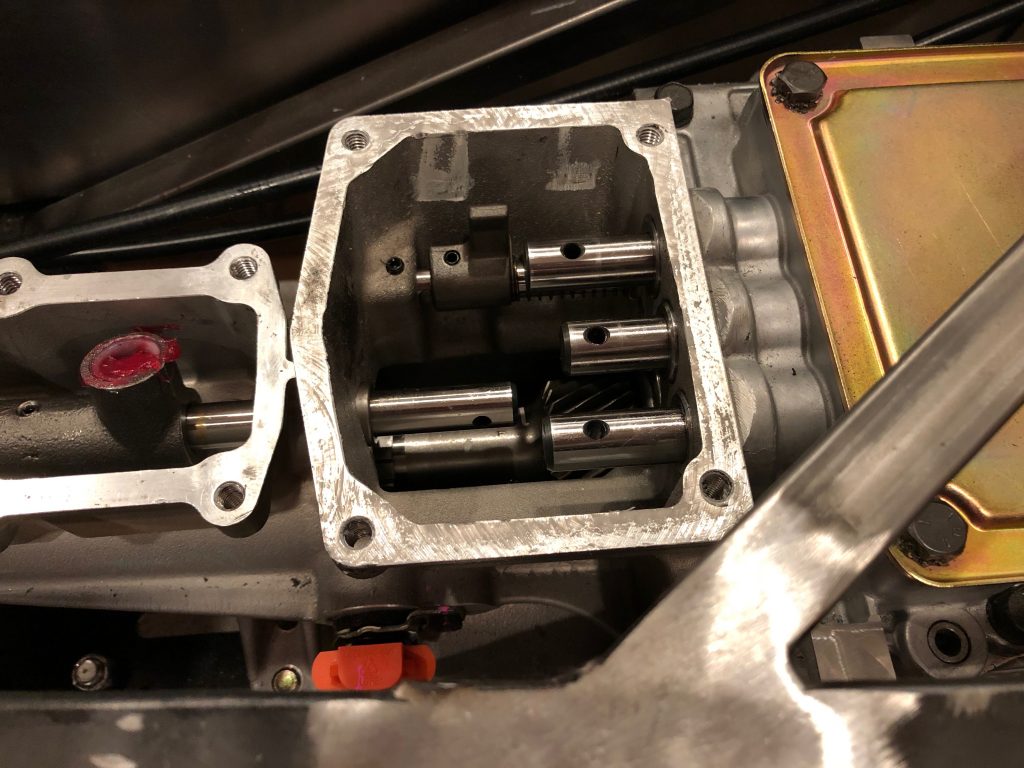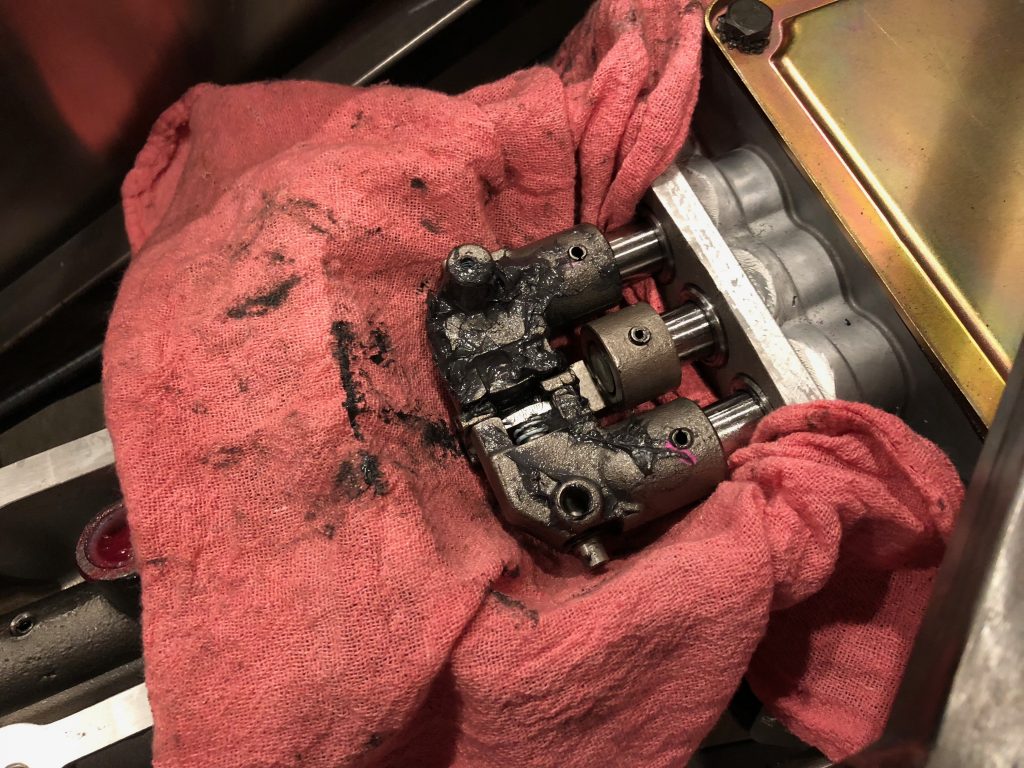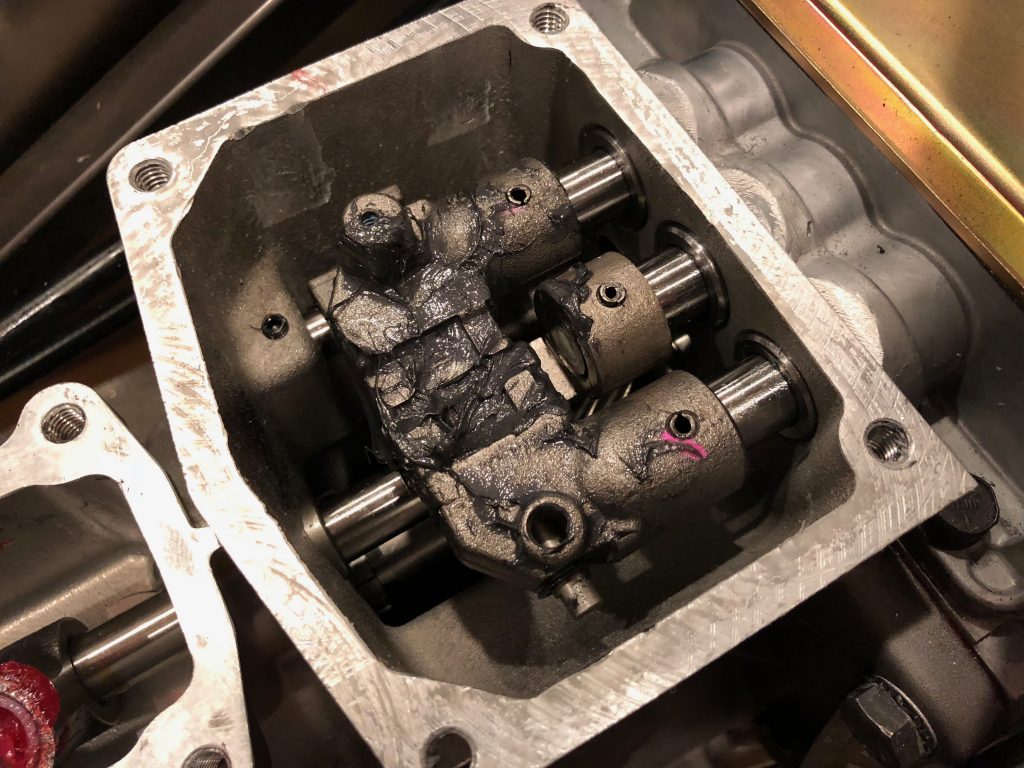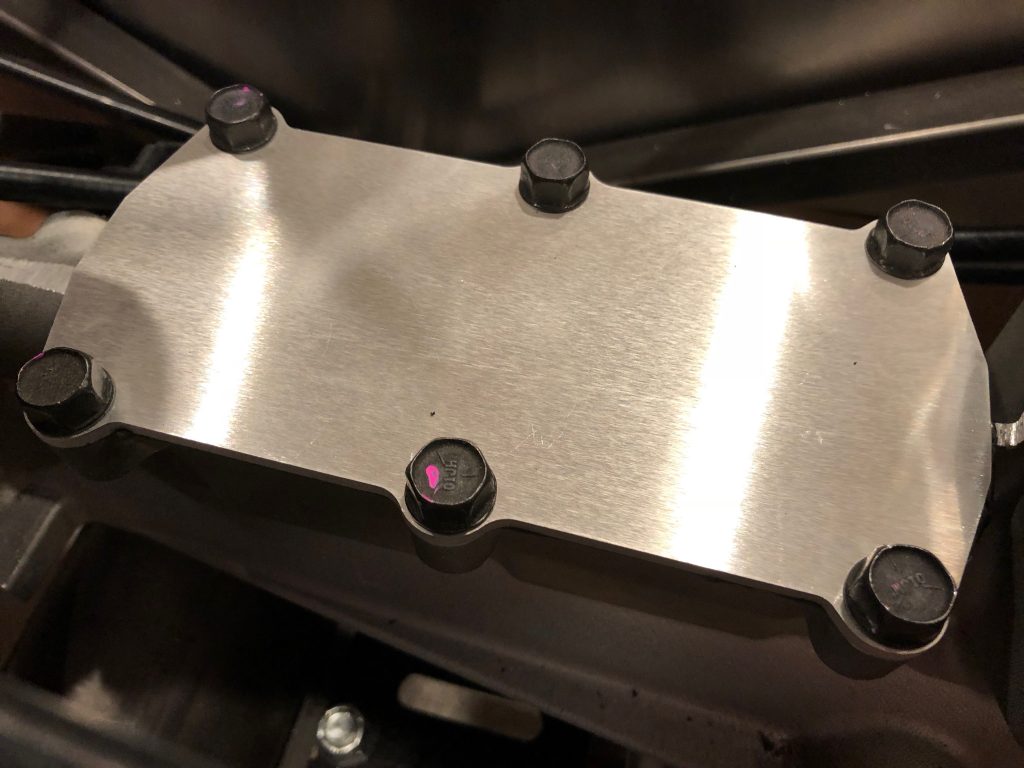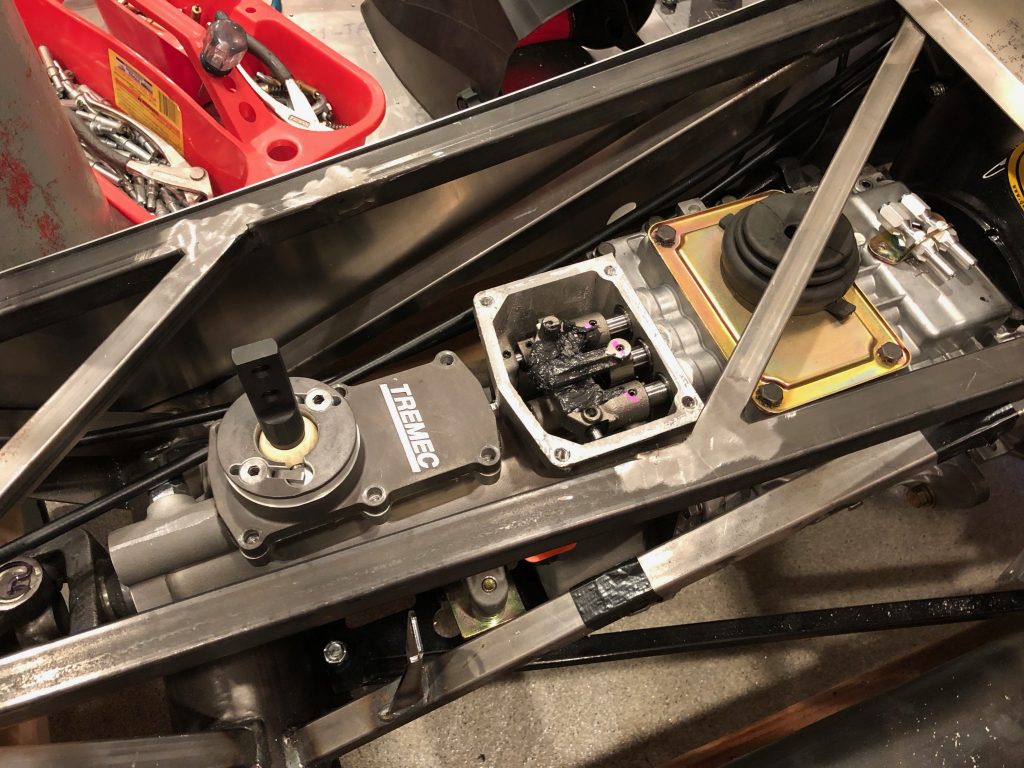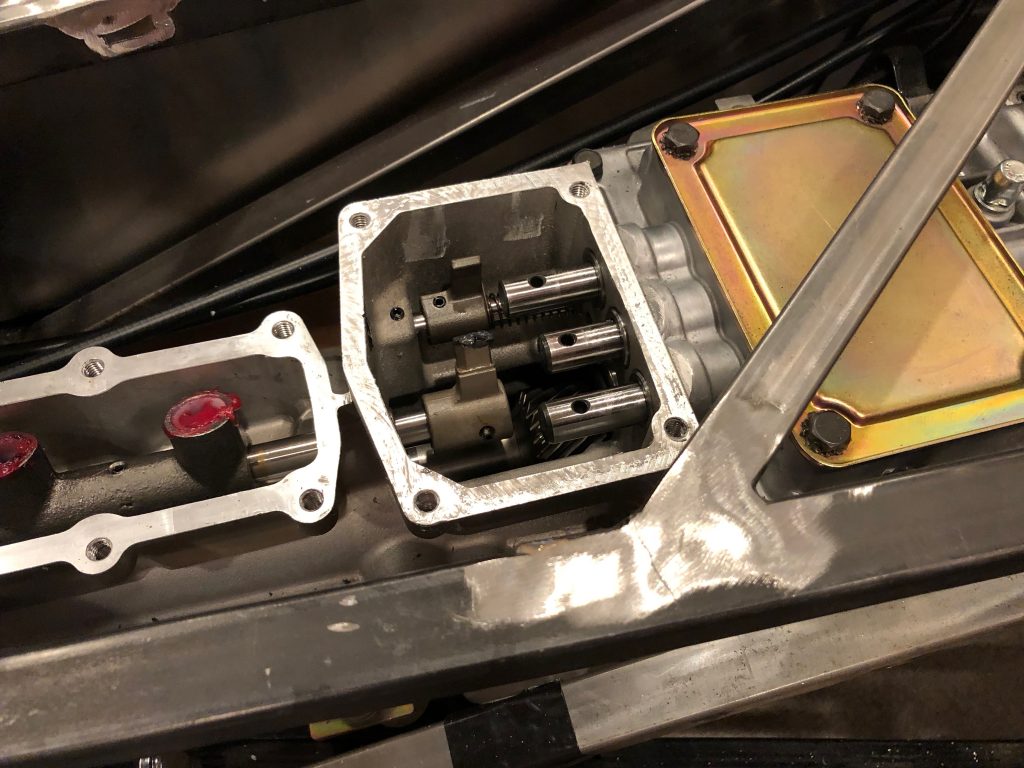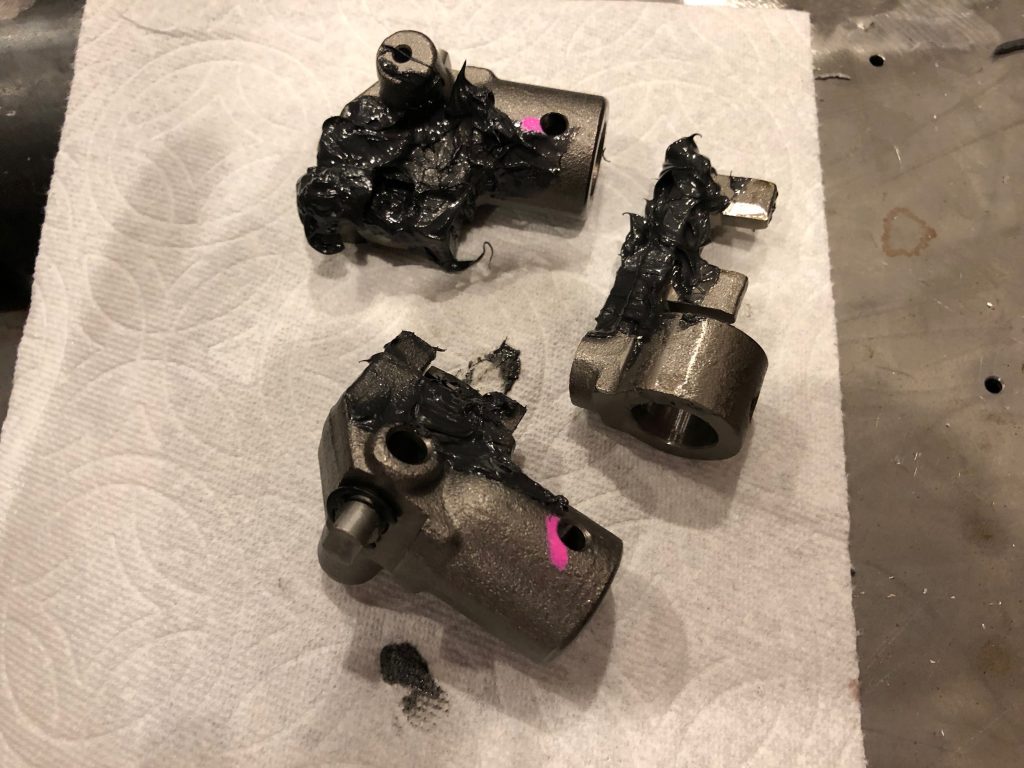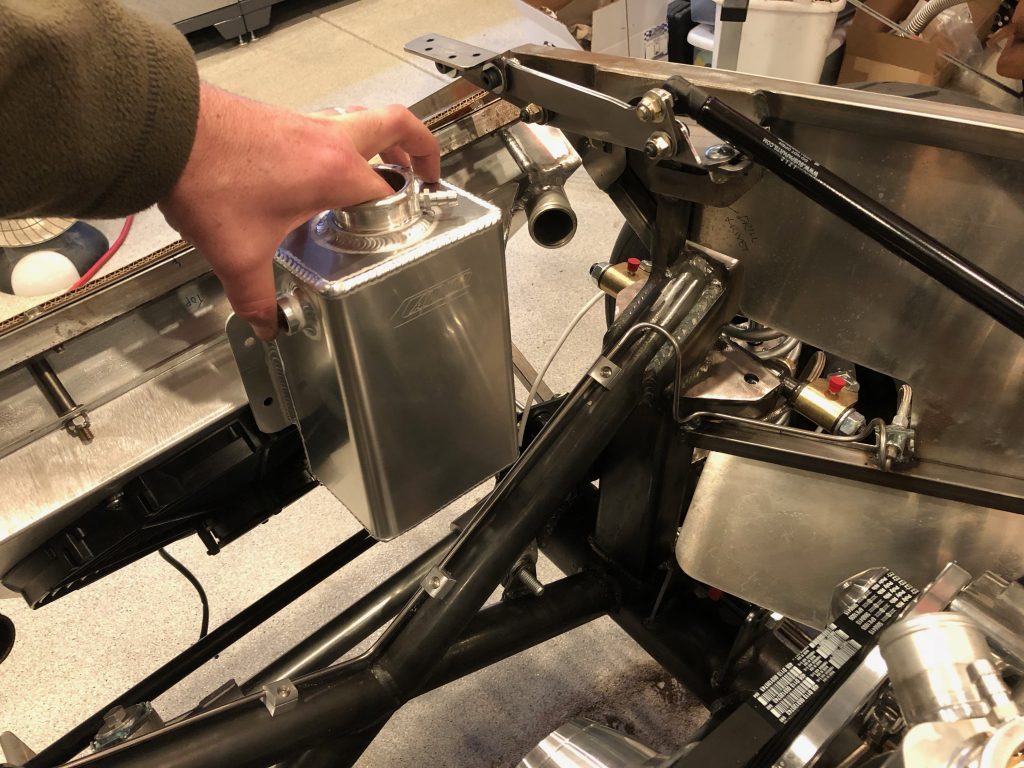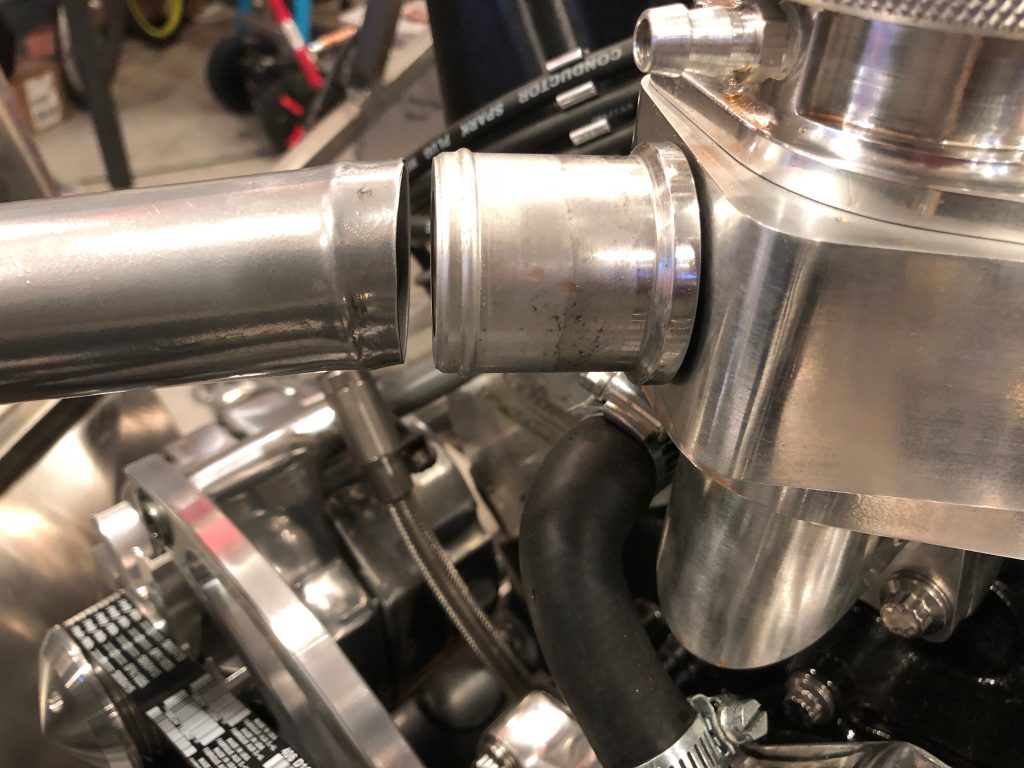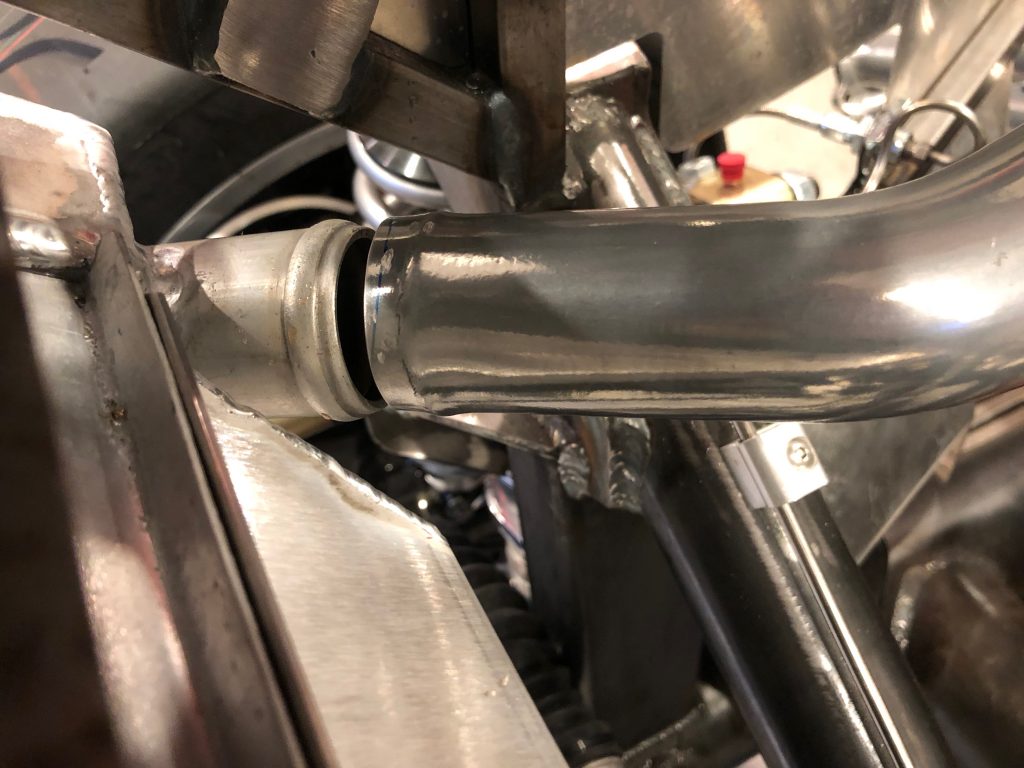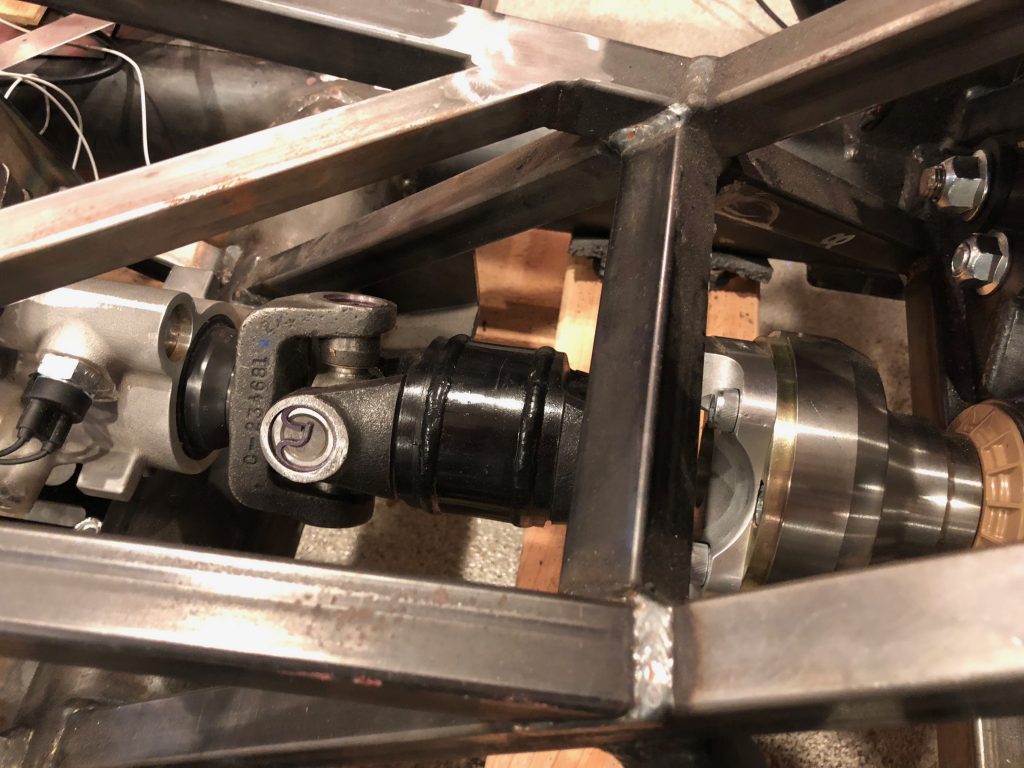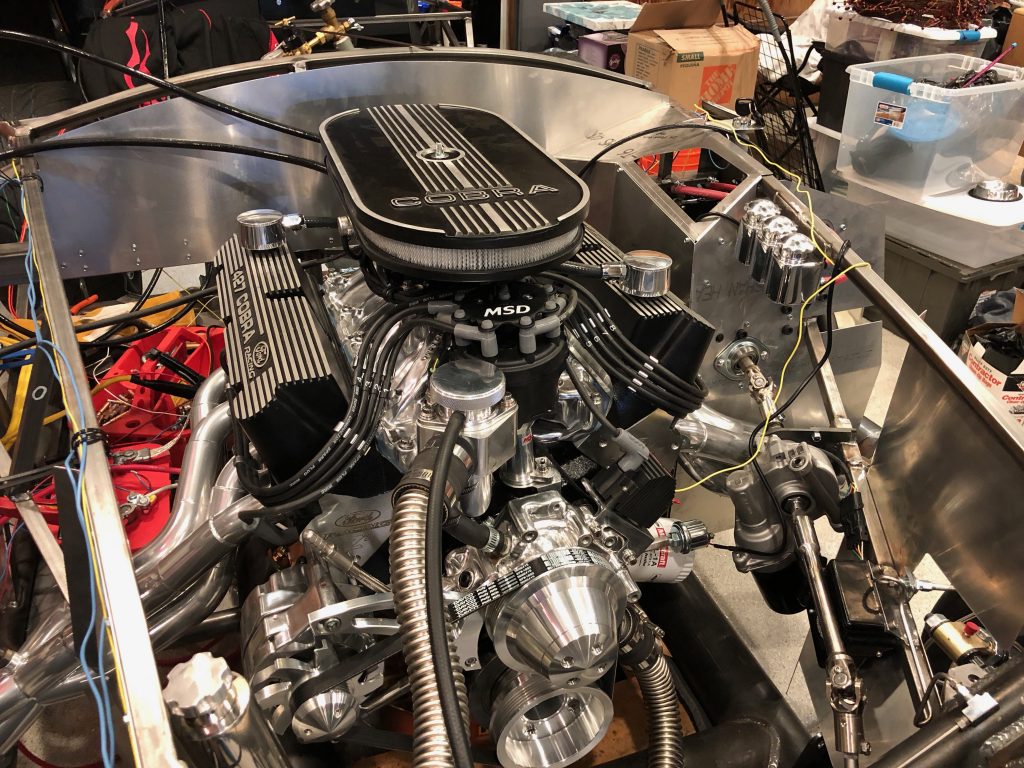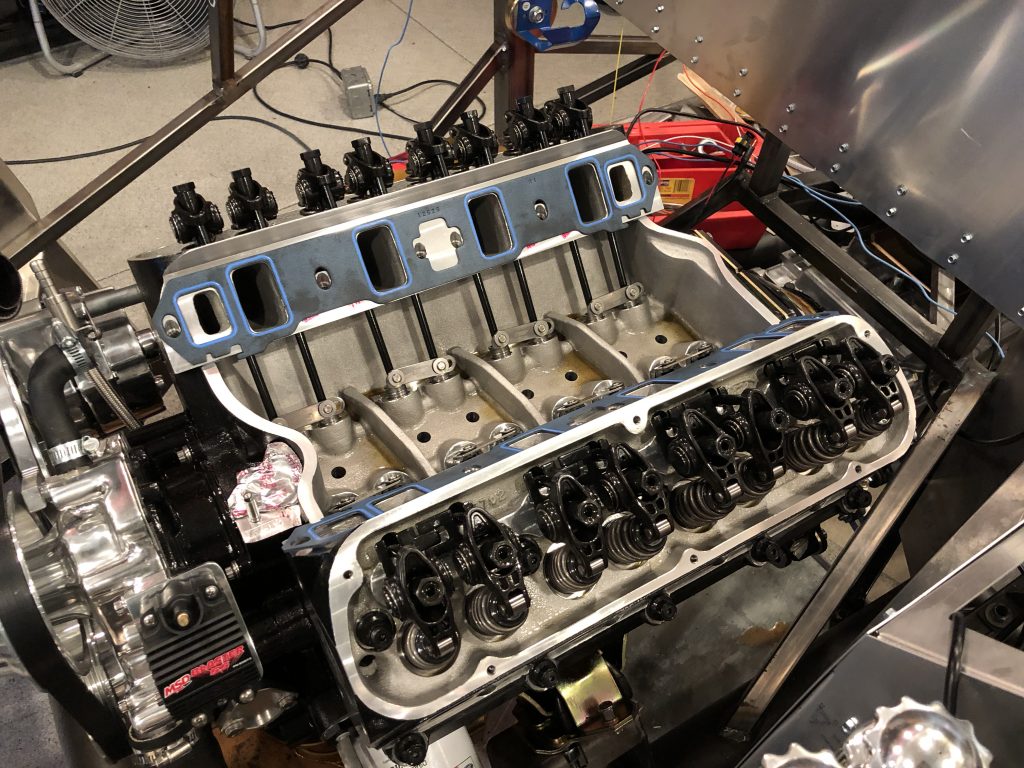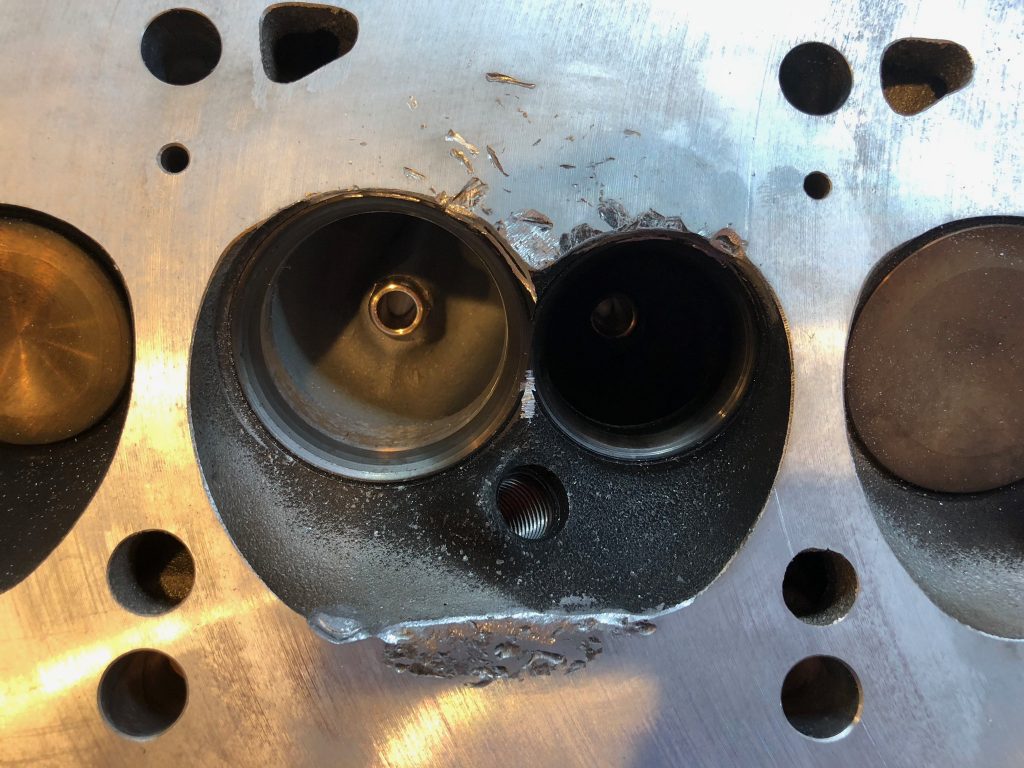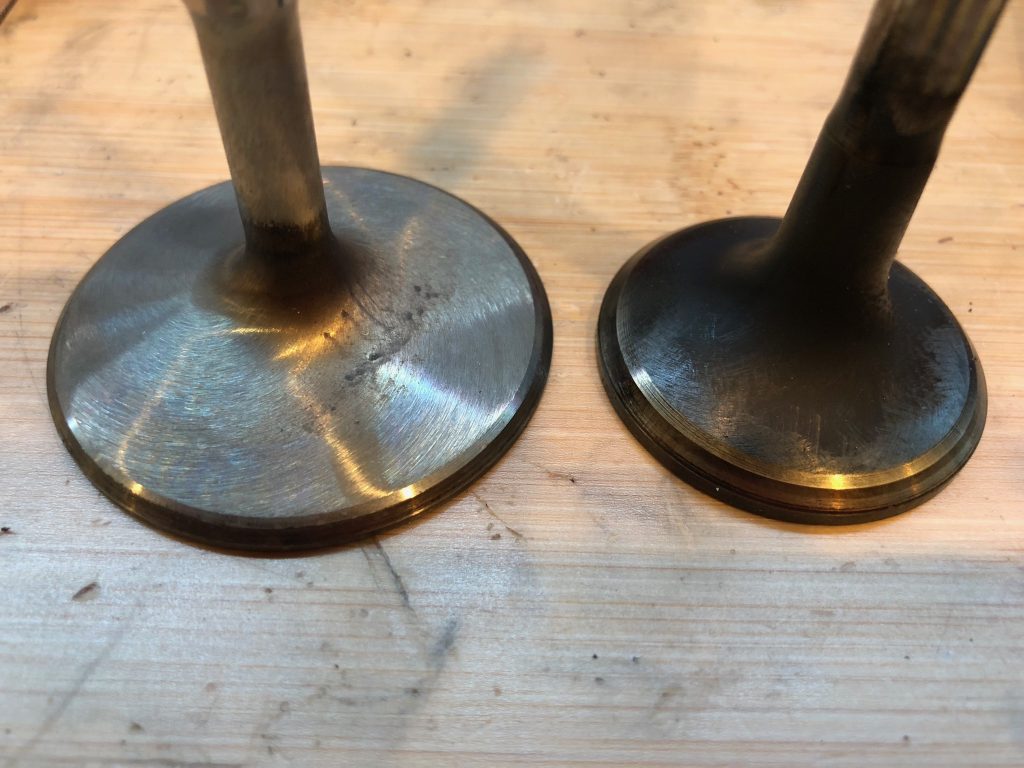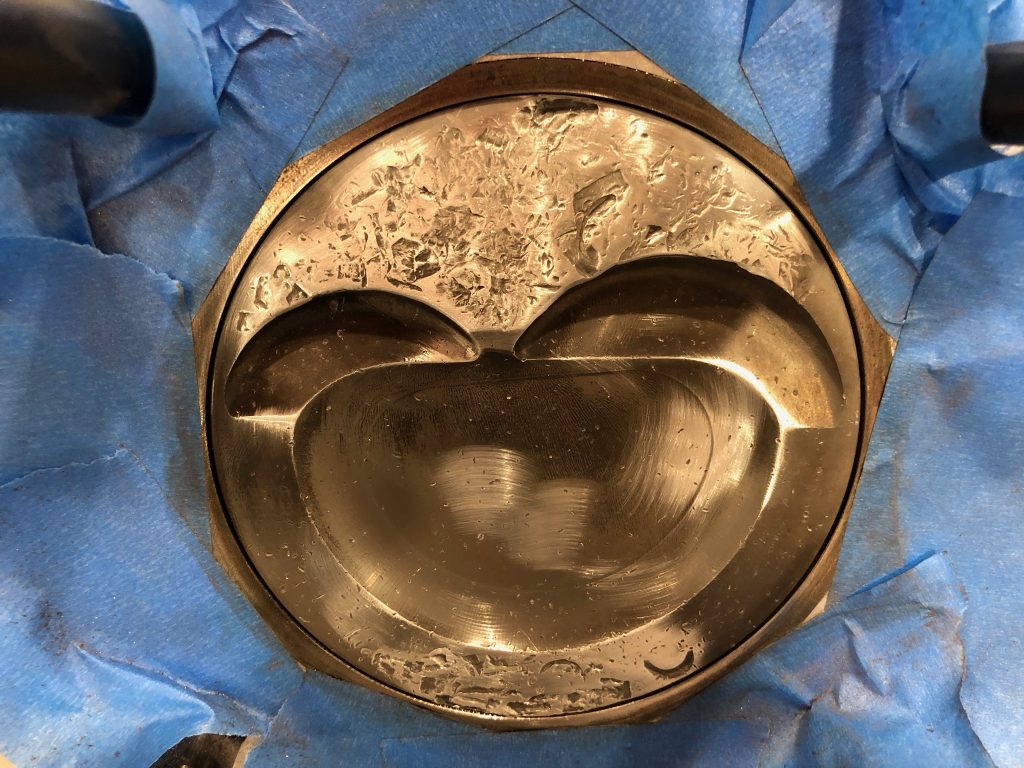I stopped by Harbor Freight and picked up a set of punches. I bent the 3/16″ punch a bit until I could use it to drive out the roll pin in the forward lug of the aft shaft.
You can see that I started driving the pin out from the left side. This was a mistake as the pin hit the case before it could be driven out completely. This wedged the shaft so that it couldn’t be rotated or slid forward/backward. After scratching my head for a few minutes, I decided to try and bend the pin to make more room to drive it out. I hit the side of the pin with a punch and bent it enough to move the pin a little more.
After a few rounds of bending the pin and driving it further out, I managed to free the lug from the aft shaft.
Here’s how the pin was mangled in the process.
I put a rag back under the forward shafts in case I dropped a roll pin, and then began reinstalling the shift lugs. First up is the new center lug on the 3/4 shaft, this time installed upside down so that it can be driven from above.
I then reinstalled the outer lugs on the 1/2 shaft (bottom) and 5/R shaft (top).
I packed the intersection with moly grease.
I applied some black RTV to the flange and installed the cover over the aft cavity.
I then applied some black RTV on the flange of the forward cavity and installed the cover plate. Finally, I applied another thin layer of RTV and installed the shifter. All of the bolts were torqued to 20 lbf-ft.
The shifter came with a rubber cover to keep dust out of the mechanism. I’ll have to remove this (or at least pull if back) to adjust the mechanical stops, but I need to wait until I have a shift lever installed.

